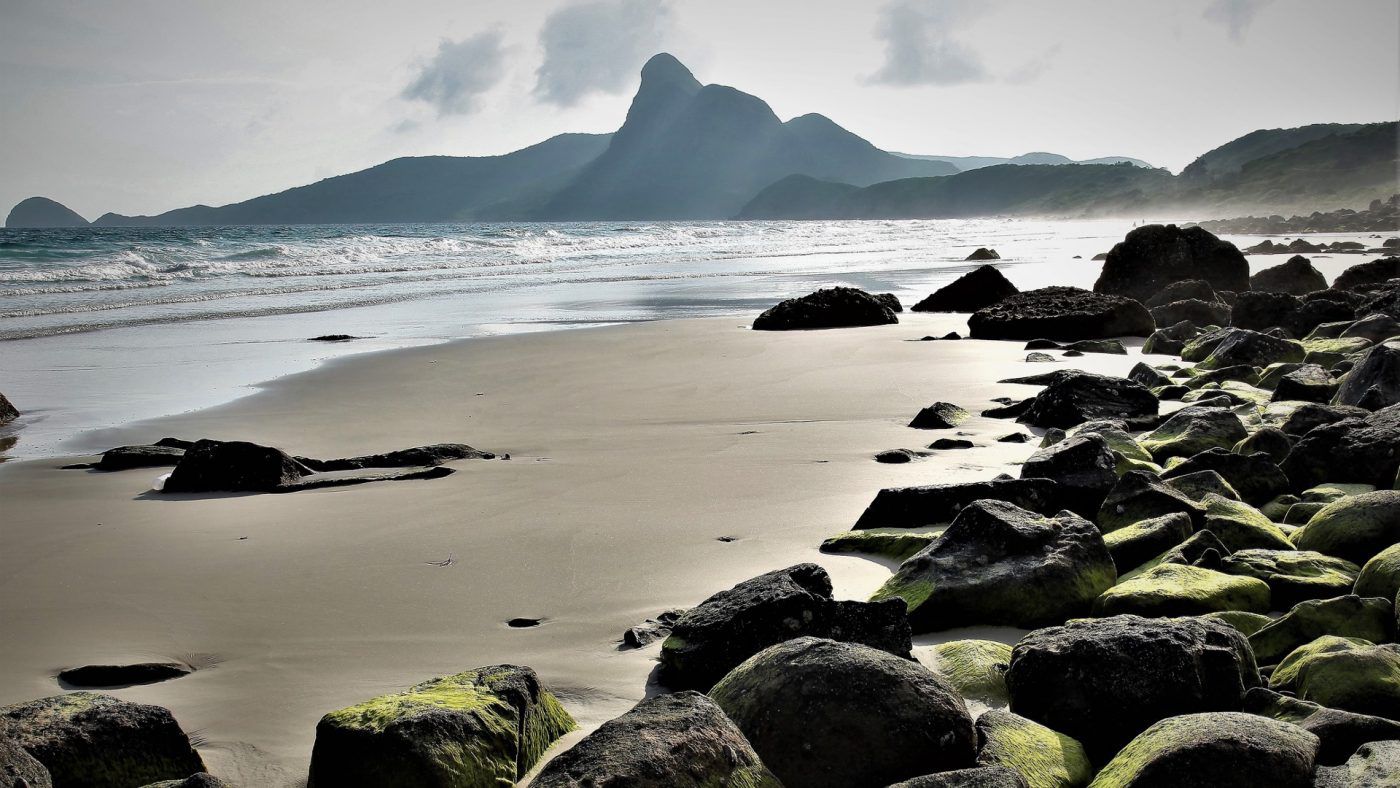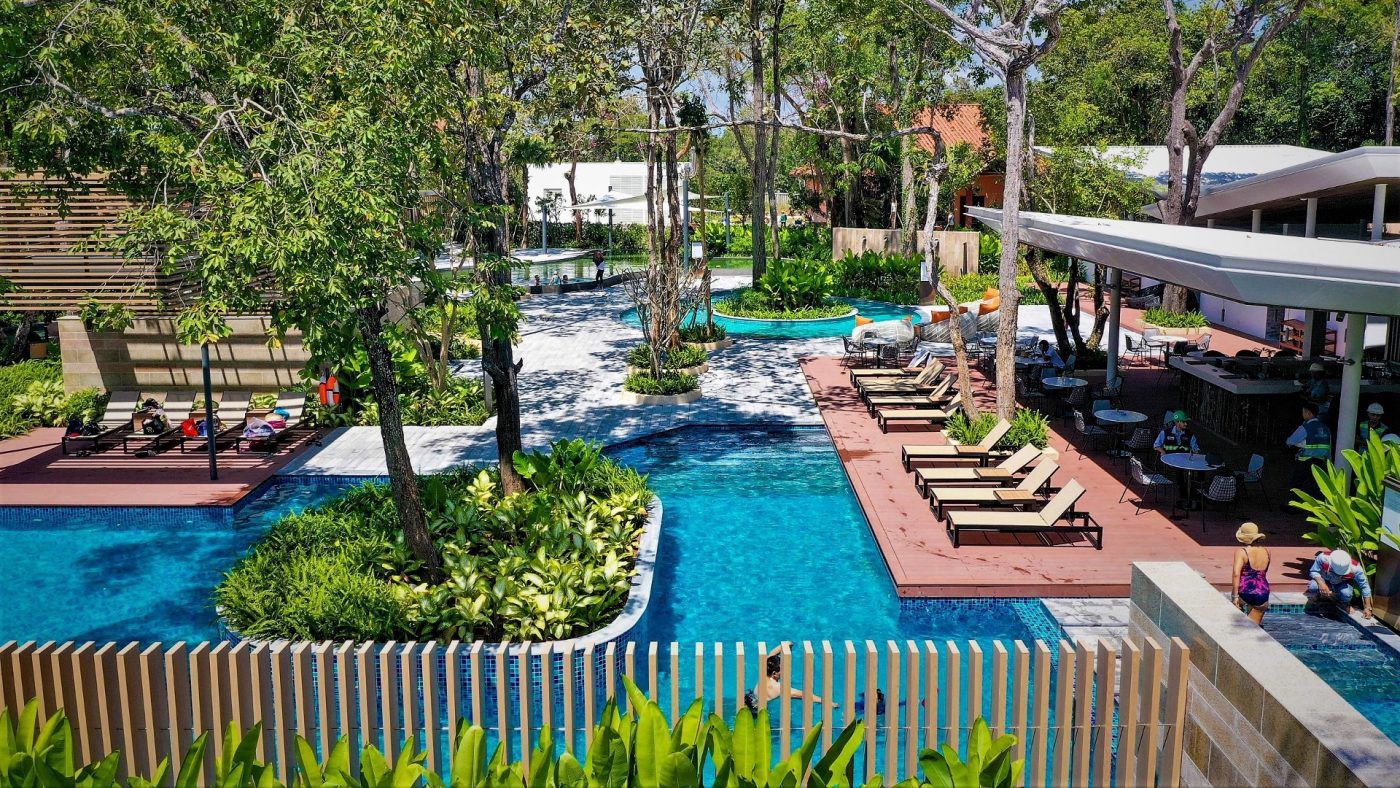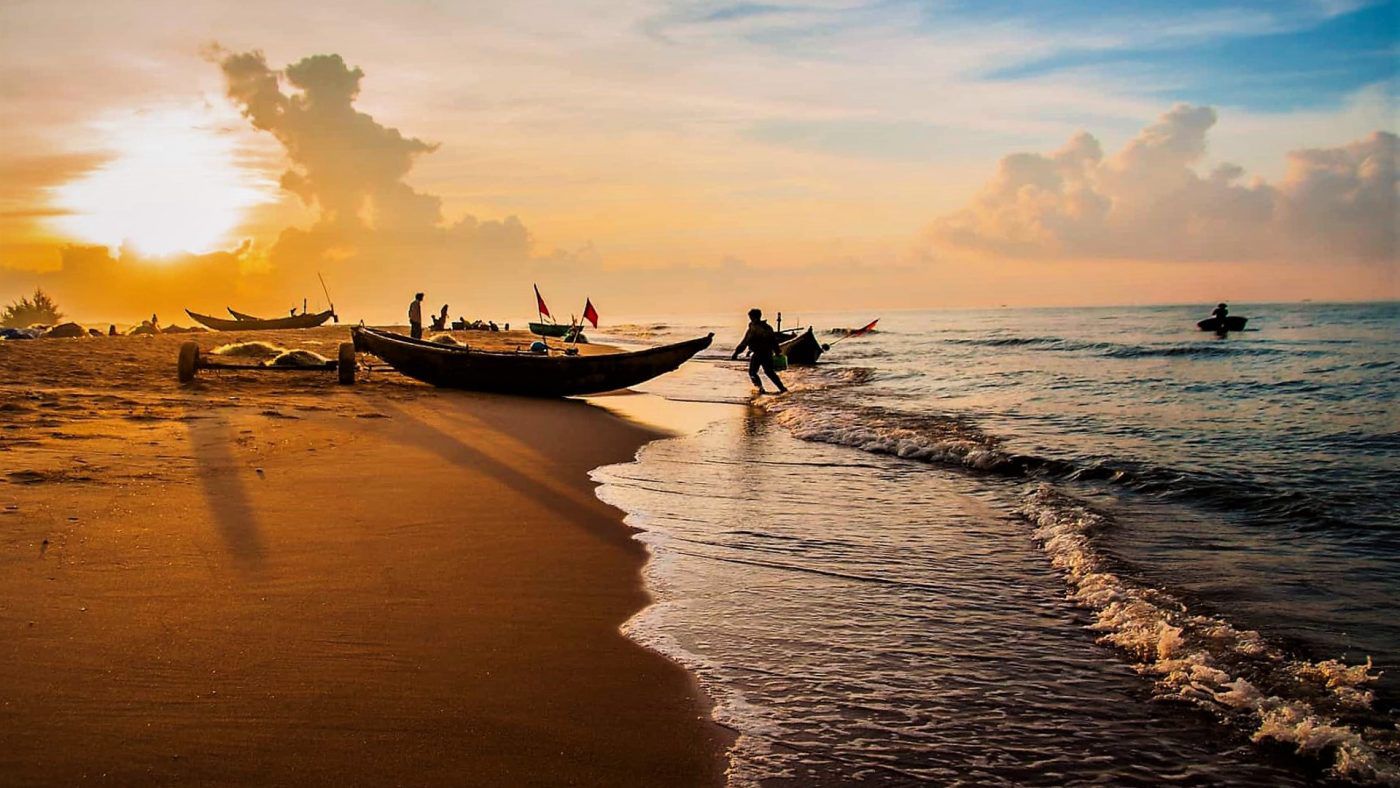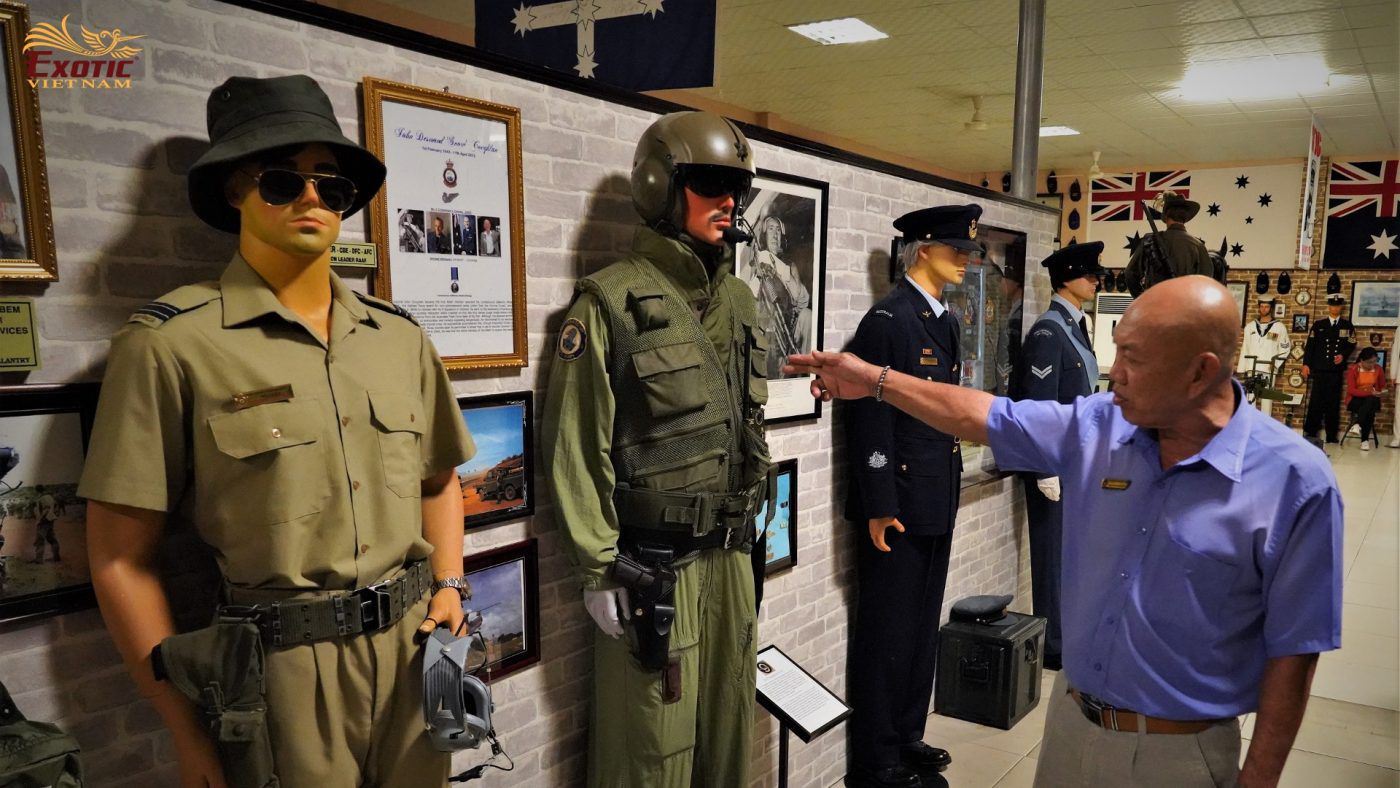TEAM BUILDING IN VUNG TAU

Location: 125km east of HCMC (2½ hours by car or 1¼ hours by hydrofoil or 30 minutes via Ganh Rai Bay from Can Gio)
Introduction: The French called it Cap Saint Jacques and used it as a weekend getaway. Vietnamese and foreign visitors are drawn to Vung Tau’s exticing beaches, idyllic seaside resorts, French villas and seafood restaurants. In the surrounding province there are hot springs, serene religious monuments in the mountains while Long Hai, Phuoc Hai and Ho Tram have become a popular destination for those who wish to hide away from the hustle and bustle of Ho Chi Minh City. Nearby Long Son Island offers a unique cultural treasure. The local population is dedicated to preserving traditional values in architecture and lifestyle in the island’s famous Big House. This is a place that holds great appeal for holiday makers and sightseers alike.
Your reward is an unbeatable panorama: all sky, sea and white sands with Big Mountain at one end and, at the other, Small Mountain, and a very long stretch of reserved forest and pristine beach – which extends for 50km between Vung Tau and Binh Chau.
Highlights: Con Dao Islands, Binh Chau thermal spring, White Villa, Ho Tram & Ho Coc Beaches, Museum of Worldwide Arms, Binh Chau – Phuoc Buu Nature Reserve, Long Son Island.
Facilities & services: international standard hotels and restaurants and water sports: jet skiing, parachuting, etc.

Team Building in Con Dao Islands
About one hour by plane from Ho Chi Minh City or one hour and a half by speed boat from Tran De Port, the Con Dao Islands is a group of 15 islands surrounded by deep blue ocean and covered in thick vegetation. The largest island in the group, Con Son Island, covers an area of 51sq.km and is ringed with scenic coves, white sandy beaches and colorful coral reefs.
Established in 1993, Con Dao National Park covers an area of 19,998 ha comprising of a part of the island (5,998 ha) and the surrounding sea (14,000 ha). Many species of corals as well as sea turtles, dolphins, and endangered dugongs are found here. Hon Bay Canh Island is renowned for its turtle breeding grounds, so if you’re visiting between June and September, you may even get a chance to watch turtles laying their eggs.
The Europeans called this majestic island Poulo Condore which means “island of squashes”. From 1862, Con Son was a big prison for Vietnamese fighting French colonialism and later the American-backed Saigon government during the Viet Nam War. The prison complex or “hell on earth” such as: Phu Hai Prison, Phu Tuong Kamp, Cow Shed, American Tiger Cages, French Tiger Cages, etc. has become the must-see destination here. The Phu Hai Prison is the largest and best preserved, while the Phu Son Prison is where prominent communist leaders were held.
Today, there are many opportunities to hike into jungle, observe wildlife, dive in emerald waters and relax on deserted beaches. Con Dao is for nature enthusiasts!

Binh Chau Thermal Spring
About 60km from Vung Tau, discovered by a French doctor named Albert Sallet in 1928, Binh Chau thermal spring, which is said to have curative properties for a number of diseases such as ascites, chronic intoxication, skin diseases, neurological or cardiovascular diseases, etc.
Water from a 3,000m depth is pushed to the ground by hot mineral gas pressure to form many eruptive spots with hot mineral water which will create hot water lakes and streams. There is a cluster of 70 visible gushers spout water at temperatures ranging from 40 to 82oC, forming a huge natural pool of hot water and mud.
A hot bath in a tub will make visitors feel fresh and relaxed after a long trip. Covering an area of 35 ha, the diversified topography of forests, beaches, lakes, hills and creeks also create favorable conditions for such outdoor activities, as camping, trekking, fishing, etc. Besides the area is also convenient for scientific research work on the primeval fauna and flora of tropical seas and forests.

White Villa
Bach Dinh or the White Villa was built during the French occupation. The mansion sits at the base of Nui Lon overlooking the Eastern Sea and is one of Vung Tau’s major landmark. Work on the mansion began in 1898 and was completed in 1902.
The project was approved by Governor-General Paul Doumer and he himself named this mansion Villa Blanche. In 1907, this place was where King Thanh Thai of the Nguyen Dynasty was under house arrest for 10 years. In 1916, after exiling Thanh Thai and his son Duy Tan to Réunion Island, this mansion was used again as a retreat for the Governor-General of Indochina. In 1934, Bach Dinh was ceded to be a summer retreat for Emperor Bao Dai and Empress Nam Phuong. Later on in the 1960s, Both President Ngo Dinh Diem and Nguyen Van Thieu also used White Villa for relaxation purposes.
The mansion is 50m above sea level and is designed in the style of 19th century French architecture. The garden has an open air dance floor and many statues and details of Greek mythology. The grounds of the mansion still show signs of a once glamorous lifestyle of the French governor who commissioned this building.
These days, Bach Dinh is used as a museum, displaying pottery from the Kangxi Emperor period recovered from an ancient shipwreck in the Hon Cau – Con Dao area, cannons and many valuable artifacts. Others were found through archaeological excavations in Ba Ria – Vung Tau, etc.

Team Building in Ho Tram & Ho Coc Beaches
Vung Tau is so famous for Back Beach (Thuy Van) in the center of the city. Visitors always want to find something different with everything better from the clarity of water, the fineness of sand and the quality of seaside resorts. Only 40km from Vung Tau, Ho Tram & Ho Coc beaches are a coastal strip between Binh Chau and Vung Tau and a part of Binh Chau – Phuoc Buu Nature Reserve.
It stretches over 20km of fine sand backed by casuarina trees and preserved forests. Crystal water, mild waves, gentle breeze, white sandy beaches and pristine scenery make the natural landscape here more fascinating for visitors of all ages. The beach offers a wide range of accommodation options with expansive views of the East Sea, thatched seafood restaurants and camping facilities. Here is a great place for those who want to look for relaxation, sea food, team building playground, or just some quiet time away.

Museum of Worldwide Arms
Opened in 2012, an extensive collection at the museum has about 4,000 artifacts ranging from guns and swords to army uniforms from the Ancient to Modern Period.
They originate from nations around the world such as the United Kingdom, France, Germany, Russia, Japan, the Netherlands, etc. Most weapons such as swords, guns, … are original artifacts dating from the 17th to the 20th century, while the clothes were restored based on historical data. Each artifact conveys interesting historical stories that are wittily narrated to capture your attention for a duration of 2-3 hours.
The museum was collected over 50 years by a British citizen named Robert Taylor. With a passion for antiques he founded the museum and widely introduced it extensively to the public.

Binh Chau – Phuoc Buu Nature Reserve
Established in 1978, the Binh Chau – Phuoc Buu Nature Reserve covers an area of 10,537 ha on a fairly flat coastal sand dune terrain, occasionally exposing granite rocks such as Mt. Hong Nhung (118m), Mt. Tam Bo (130m), Mt. Ho Linh. (160m),…and many basins like oases with fresh water all year round or dried up in the dry season.
This is the only coastal primeval forest remaining relatively intact in Viet Nam. With the advantage of the Diuaceae forest, it’s a habitat for biological species, especially rare and endangered species. The reserve owns an evergreen and semi-deciduous forest ecosystem, with a diversity of plant composition, including 750 species belonging to 123 families, with many rare species in which dau cat species (Dipterocarpus costatus) is considered endemic tree species of the reserve. Regarding animals, the reserve also has 205 vertebrate species of birds, mammals, reptiles and amphibians.
With a 17km stretch of coastline, Binh Chau – Phuoc Buu Nature Reserve is a combination of forest, sea, and animals, which makes a great and majestic beauty like a masterpiece of art. You will be able to breathe the fresh air and immerse yourself in peaceful nature that can no way found in the busy town. Depending on the season, the colors of the forest may change from green to golden, bringing different experiences for everyone. It would be unforgettable to take a trek or participate into a team building activity in the forest.

Team Building in Long Son Island
There is a land in the South Viet Nam, people still hold traditional values: dressing in black “baba”, hair tufts and bare heads. There they spread mouth-to-mouth the teaching words of ancestor from generation to generation. That’s Long Son Island, 90 km southeast of Ho Chi Minh City, right at the gateway to the tourist hub of Vung Tau.
The history of settlement on Long Son is more than 100 years old when the leader named Le Van Muu (1855 –1935) from the Mekong Delta came here to escape from arrest of the French colonialists in 1900. The village was originally called Nui Nua, named after the 183m-high mountain here. At that time this was an isolated island surrounded by lush mangroves, tidal muddy mashes and vast waters. Sir Muu and the villagers have cleared the land for salt fields, rice fields and fishing in a life of sharing and helping each other to overcome difficulties. A complex of traditional massive architectural works on an area of 2 hectares including ancestral temple, school, market, guest house, etc. was erected from 1910 – 1929, called Big House by the locals.
With rivers, mountains, plains, swamps, mangroves and architecture complex of Big House, this is the venue to meet all requirements of a perfect playground for team building activities. The trip helps participants explore the spiritual heritage of Mr. Tran, not only teachings of righteous and moral life, but also sharing the difficulties and obstacles to success.
